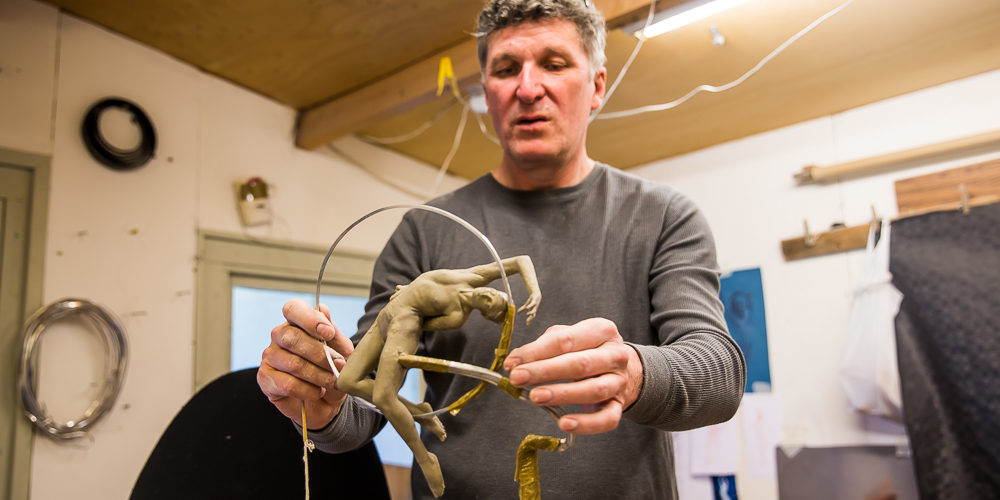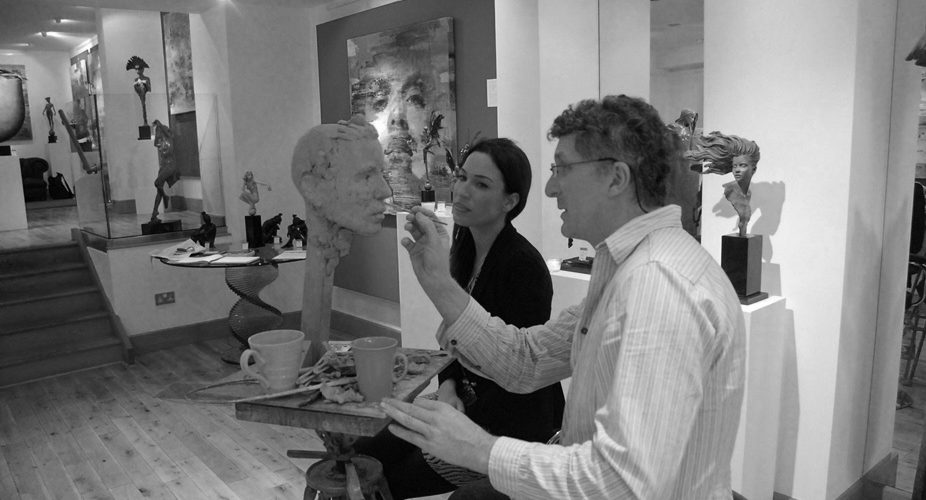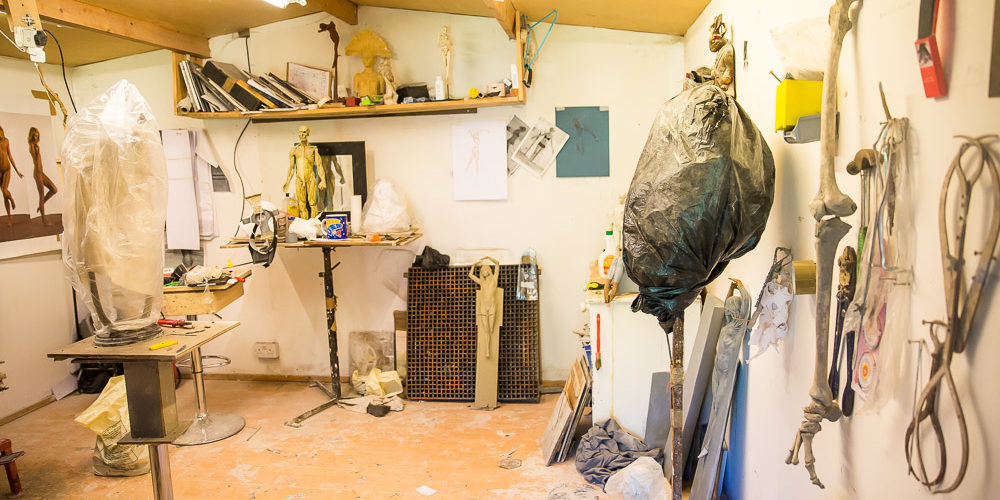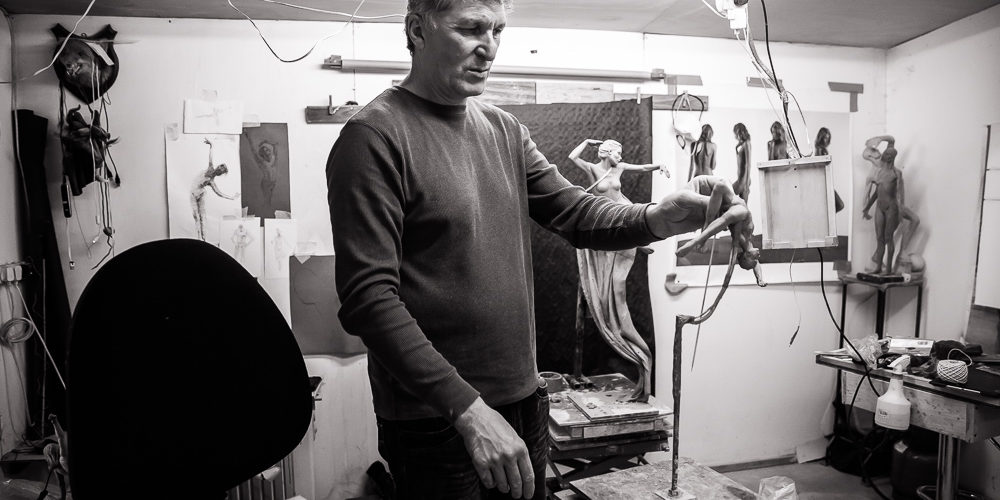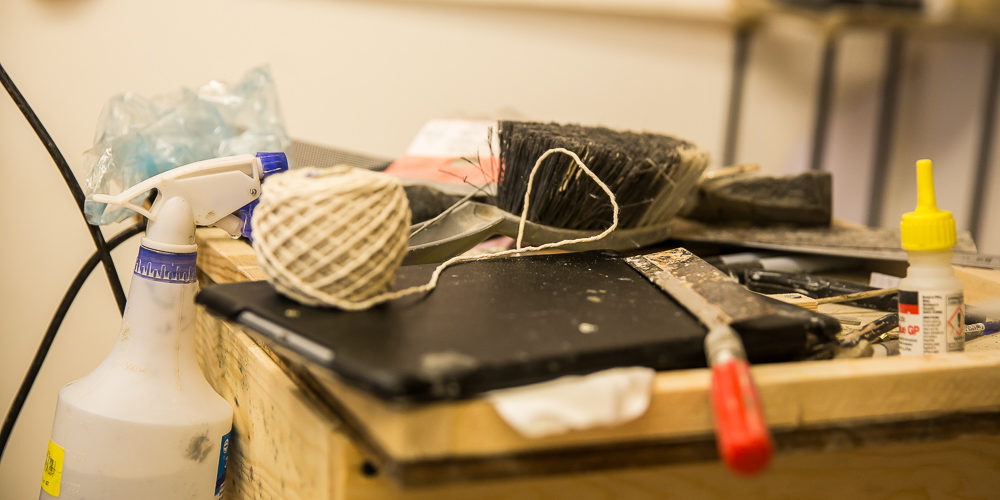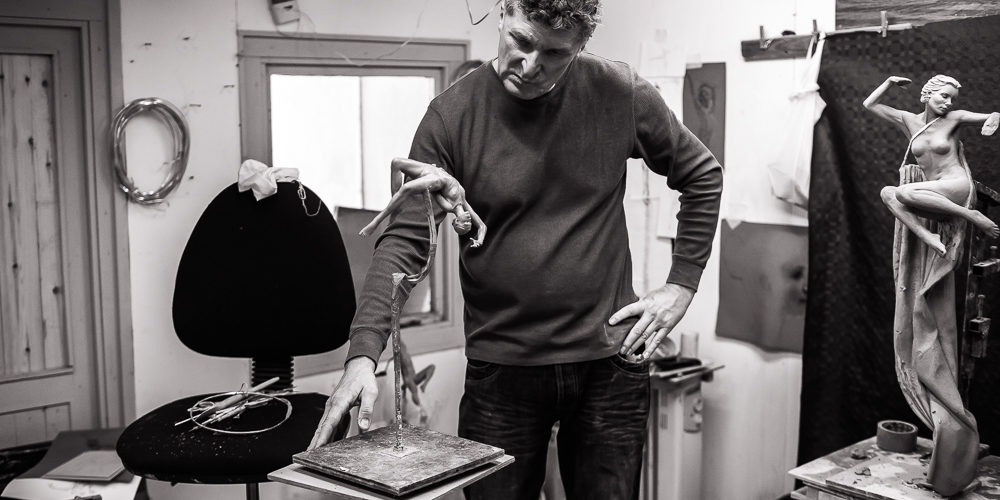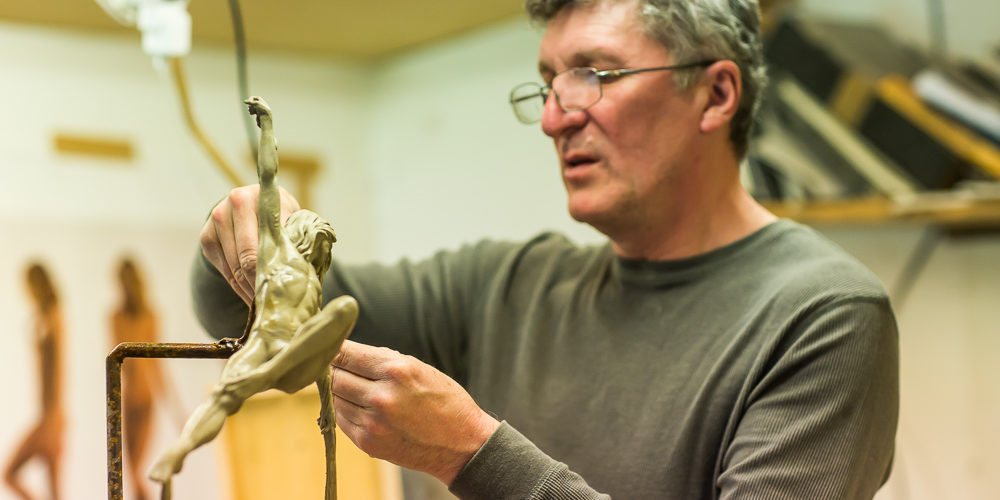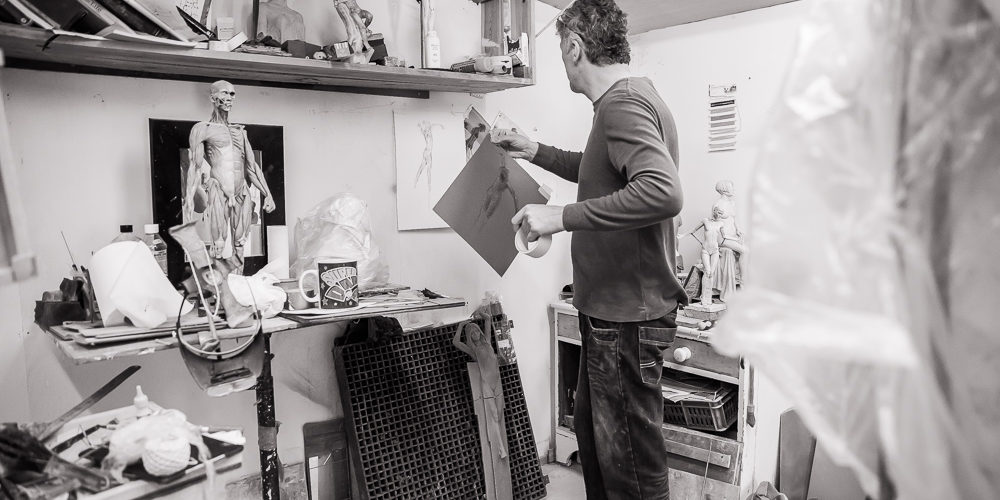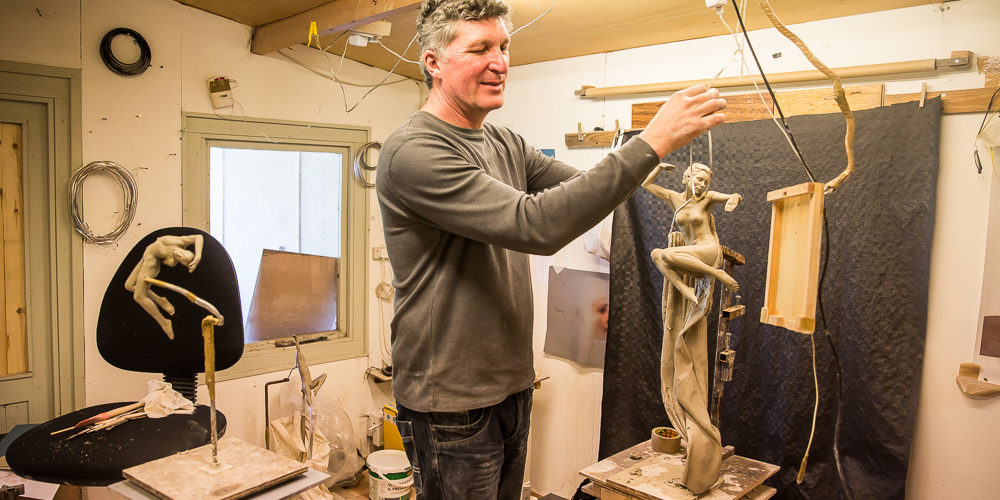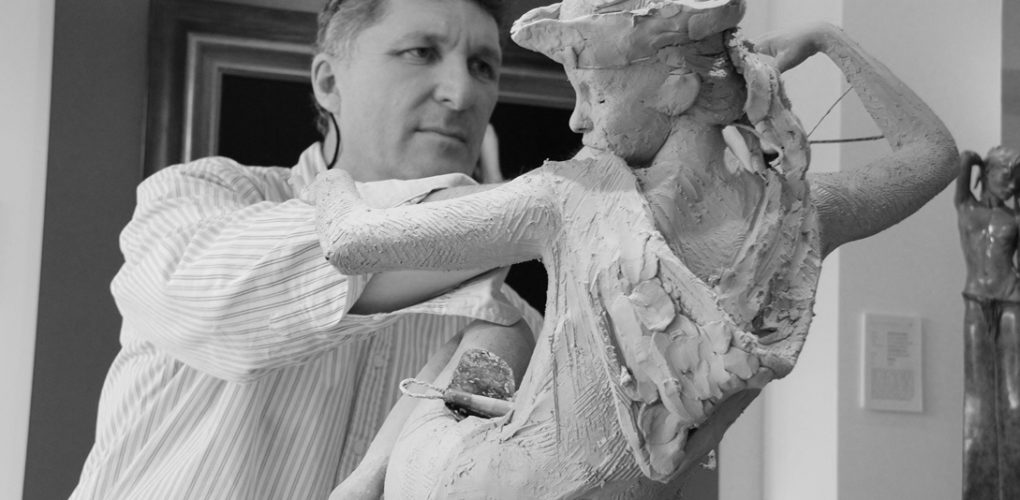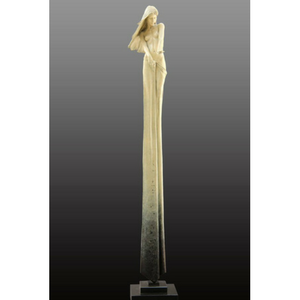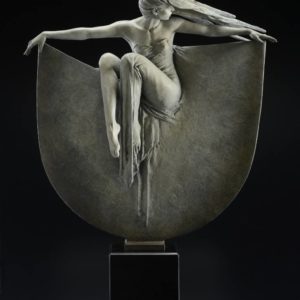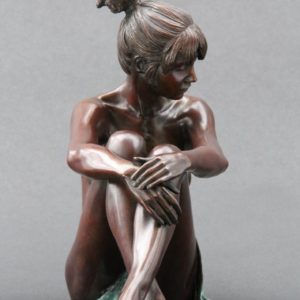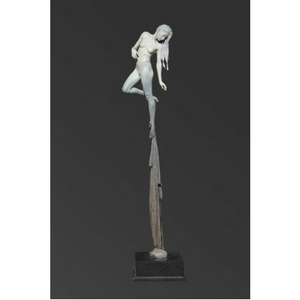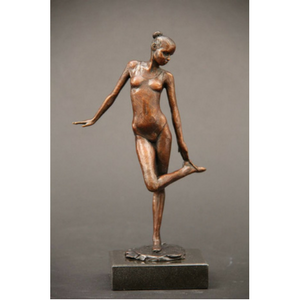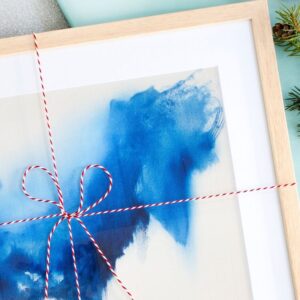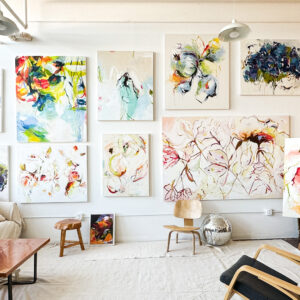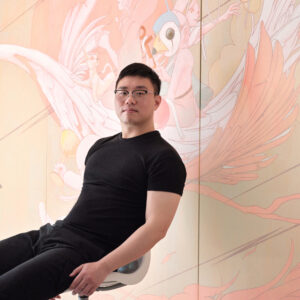Inside the Studio
 Michael James Talbot’s Many Faces of Aphrodite
Michael James Talbot’s Many Faces of Aphrodite
What are the major themes you pursue in your work?
The themes in my work are drawn from and woven around archetype historical myths and stories. These themes still vividly speak to us, because our deeper essential human concerns remain the same. I am very interested and inspired by theatre and see certainly figuratively sculpture as theatrical medium. It can be related in some sense to theatrical tableau but unlike tableau bronze it is solid and fixed allowing the viewer a contemplative permanence.
It is this aspect that drew me to sculpture as a student. I believe that it is possible for a work of art which is a physical object, that can be seen and held and touched, can simultaneously also be a work of pure spirit. It can move us at our deepest level at the level the resonates and defines us.
The pursuit of this goal for me is to work with human form, beauty, structure and balance. I use the word pursuit as it is a process that is truly “Ever beckoning ever retreating “ I believe that If you dedicate yourself to this sincerely and you work with the best artists craftsmen dancers and models you can find who also share this belief , you will make sculpture that reflects this, and you will make beautiful timeless works.
How did you first get interested in your medium, and what draws you to it specifically?
I work almost entirely in water clay, occasionally wax for very small items quick working maquettes etc. But the “work is in Clay”. Water based clay holds light in the same way as skin both being water based, I find this invaluable in defining the shape for movement and tension. Clay although difficult to maintain because of its tendency to dry out, brings the virtue of an initial soft pliability, allowing it to be applied in the same direction as the form, taking on its character then drying to a resistance. This then allowing tools to define the tension and the play between soft form, muscle and bone structure reflecting through to the surface.
How has your style and practice changed over the years?
I spent a great many years in simply trying to understand the figure, it’s anatomy and its language. Body language in the conversational sense but also what the figure and in particular the female figure can stand for, what can it uniquely communicate and symbolize. As a student my studio was the life room to work from the live model as long and as often as it was available. I spent many years, much to the frustration of my teachers making “life studies”. This gave me my vocabulary of form which I have now refined and synthesized into a language in which I hope I have finally found my song.
Can you walk us through your process? Do you begin with a sketch, or do you just jump in? How long do you spend on one work? How do you know when it is finished?
I start always with a maquette something to see in the round very loose without any sense of the precious, a piece of wire and a very rough clay shape, absolutely disposable. Much of my sculpture has an element of balance or poise I use a small loose uncommitted shape, a shape that can be viewed in space and can be seen with its relationship to the ground to resolve this first issue, does it float, does it lean, does it leap ?
I can then sharpen elements to enhance its gesture, several attempts at this will refine the image to a point where I can explore the gestures with a live model and introduce some elements from life.
The sculpture begins the traditional way with a metal armature , a wire skeleton frame based on the maquette on to which clay is built up to form the sculpture. Once the sculpture is taken up to full volume, the work begins of refining, shifting and endless reworking I estimate to spend 80% of my time with the figure in this flux state.
When the sculpture is, I am reluctant to use the term finished , but at a point when I can bear to let it go. I am often asked how long the sculpture takes to make and I would estimate around 200 hours hard focus. After which the craft stage begins with Mould making, wax and molten metal and patina.
We use the same loss wax metal process as the Greeks and the Romans. The materials have become more refined but the transference of surface from clay to wax to bronze remains the same and for an artist remains magical.
If you could only have one piece of art in your life, what would it be?
Any Rembrandt self portrait. Because they are totally authentic, I would put it on the bedroom wall so it was the first thing I saw in the morning. It would remind me that his development as an artist was long, difficult, and fraught with triumph and disaster. His response was unflinching and the results were worth the journey.
Who are your favorite writers?
I have reached the time of life when I am returning to authors I read as a young man. Of whom I would of said if asked “I have read that”. Now rereading books that were written by authors who would have been around my age now. A very different landscape opens up, and that I am enjoying it immensely! But to answer the question: George Orwell, the bleak Russians, Cormac McCarthy; and for balance T. Pratchett, Patrick O’Brian and not because I am an old softie and only because I love the historical period: Jane Austen and the Brontes.
